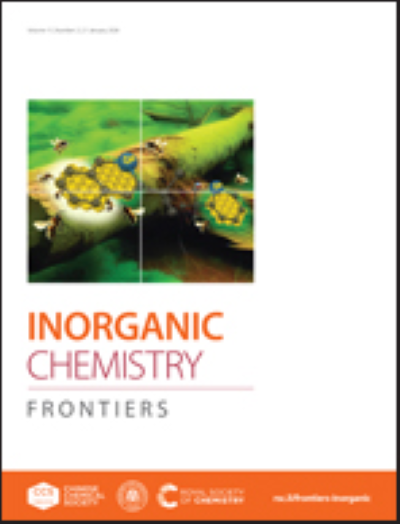Bi2MO6 (M=Mo, W) Aurivillius Oxides for Efficient Photocatalytic N2-to-NH3 Conversion: A perspective review
IF 6.1
1区 化学
Q1 CHEMISTRY, INORGANIC & NUCLEAR
引用次数: 0
Abstract
The emerging synthetic ammonia (NH3) technology, photocatalytic nitrogen reduction reaction (pNRR), holds great prospect for sustainable ammonia synthesis using clean solar energy with zero-emissions. Nevertheless, high bond energy activation of inert nitrogen molecules (N2) remains a bottleneck for pNRR catalysts. Bi2MO6 (M=Mo, W) photocatalysts have highly recognized by the catalytic community due to their versatile structural and electronic properties. In this review, it is the first time to summarize the latest research progress of Bi2MO6 (M=Mo, W) photocatalysts for N2-to-NH3 applications. The process and mechanism of photocatalytic nitrogen fixation were elucidated from the adsorption, activation and hydrogenation of N2-to-NH3. Particularly, the roles of defect engineering and heterojunction strategies on the N2-to-NH3 of Bi2MO6 (M=Mo, W) photocatalysts were summarized, and the accuracy of ammonia nitrogen detection and source was discussed. Finally, the future direction of photocatalytic ammonia synthesis for agricultural and industrial applications was indicated. This review aims to providing forward-looking insights to inspire innovative strategies for sustainable nitrogen fixation and provide a roadmap for future advancements.Bi2MO6 (M=Mo, W)氧化锆光催化n2 - nh3高效转化研究进展
新兴的合成氨(NH3)技术--光催化氮还原反应(pNRR)--为利用零排放的清洁太阳能进行可持续合成氨带来了巨大前景。然而,惰性氮分子(N2)的高键能活化仍然是 pNRR 催化剂的瓶颈。Bi2MO6(M=Mo,W)光催化剂因其多变的结构和电子特性而受到催化界的高度认可。本综述首次总结了 Bi2MO6(M=Mo,W)光催化剂在 N2 转 NH3 应用中的最新研究进展。从 N2 转化为 NH3 的吸附、活化和氢化过程阐明了光催化固氮的过程和机理。特别是总结了缺陷工程和异质结策略对 Bi2MO6(M=Mo,W)光催化剂 N2 转化 NH3 的作用,并讨论了氨氮检测和来源的准确性。最后,指出了光催化氨合成在农业和工业应用中的未来发展方向。本综述旨在提供前瞻性见解,以启发可持续固氮的创新战略,并为未来的发展提供路线图。
本文章由计算机程序翻译,如有差异,请以英文原文为准。
求助全文
约1分钟内获得全文
求助全文
来源期刊

Inorganic Chemistry Frontiers
CHEMISTRY, INORGANIC & NUCLEAR-
CiteScore
10.40
自引率
7.10%
发文量
587
审稿时长
1.2 months
期刊介绍:
The international, high quality journal for interdisciplinary research between inorganic chemistry and related subjects
 求助内容:
求助内容: 应助结果提醒方式:
应助结果提醒方式:


